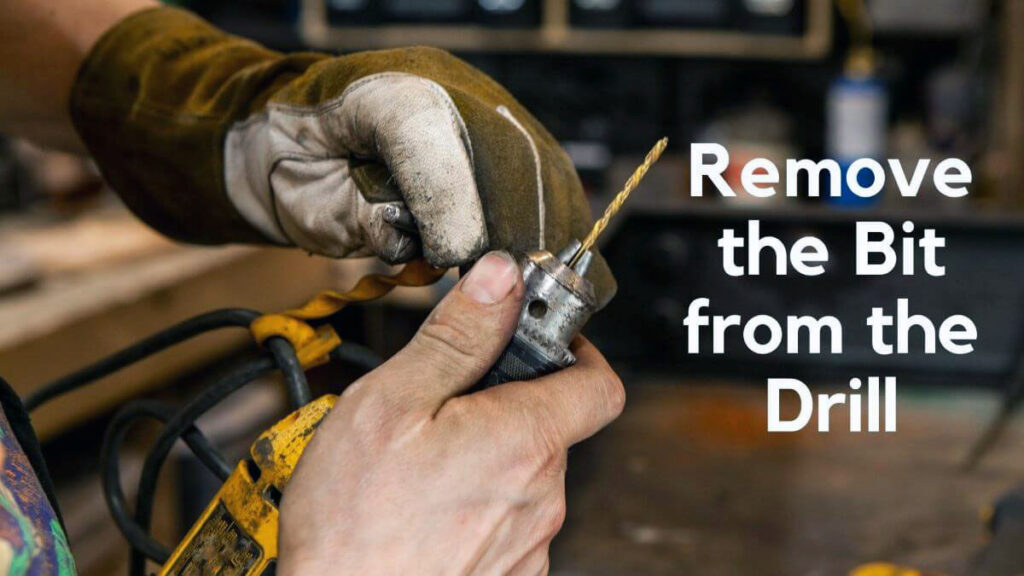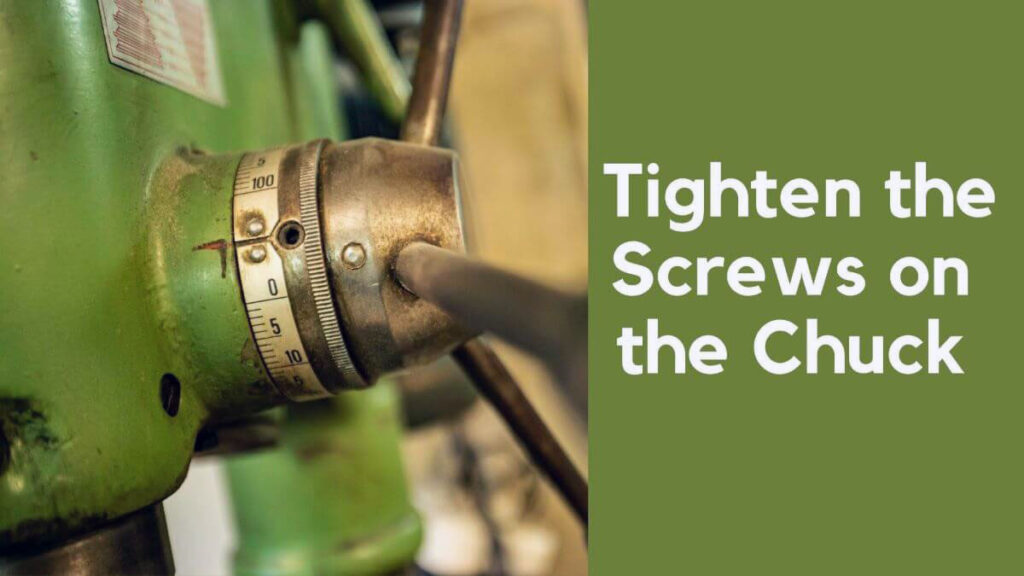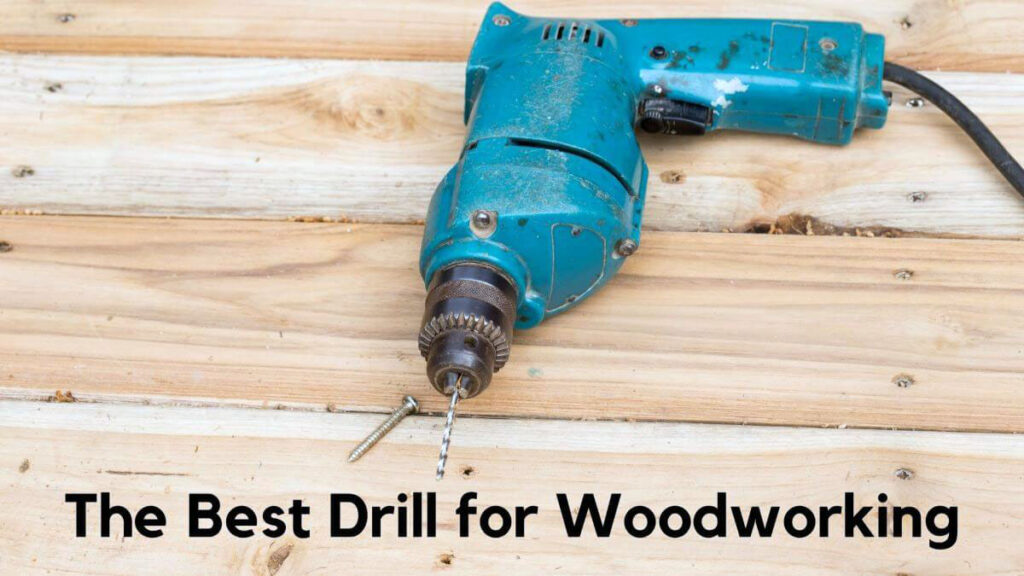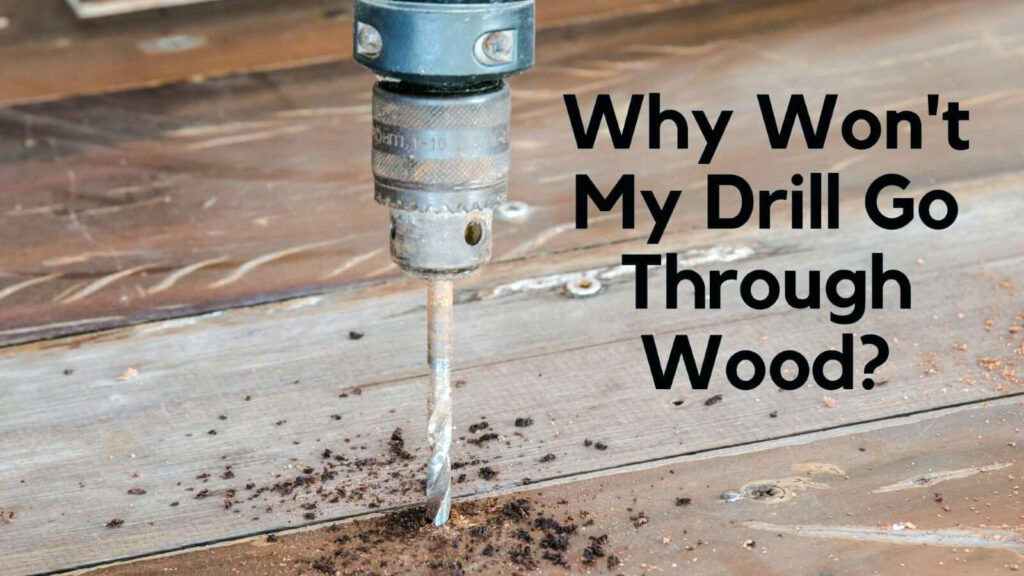A wood drill bit is a drill attachment used in woodworking. It is designed to cut out a hole in the wood and can be either a straight or spiral bit.
If you have ever drilled into the wood, you will know that it’s not as easy as it looks. You will quickly find that your drill is not powerful enough to drill through the wood.
This can be pretty frustrating, especially when you are in a hurry and there is no time to go and buy a more powerful drill. But, there is a solution to this problem as well. Here is an to help you drill through wood easily and quickly.
Table of Contents
What Causes a Drill to Stop Working Through Wood?
The drill bit might have become stuck in the wood. If the bit is loose, the drill motor can still spin and cause damage. If the bit is tight, it might not turn at all, which would cause the drill to stop working through the wood.
Here are a few reasons why a drill might not work well when drilling through wood.
The most common problem is that the bit can become stuck in the wood, preventing the drill from moving. If the bit becomes too lodged, you may need to use a chisel or other tool to free it and then try again.
Another issue is that the wood may be too thick or complex for the drill bit to penetrate. In this case, you may need to use a more significant bit or change the angle of your drill so that it hits the wood more directly.
Finally, if your drill isn’t powerful enough, it may not be able to break through the wood sufficiently. In this case, you may need to upgrade your tool or purchase one with more power.
How to Fix a Drill That Won’t Go Through Wood
Step 1: Remove the Bit from the Drill

When drilling into wood, it is essential to remove the bit before continuing. If the bit remains in the wood, it can cause damage and even break the drill.
Step 2: Clean the Drill Bit
Clear the Bit and Drilling Area Once the bit is removed, you will need to clear the area around it so that you can drill without obstruction. Use a trowel or shovel to remove any debris, and then use a bucket or pan to catch any water that may come out of the hole.
Step 3: Tighten the Screws on the Chuck

If you are drilling a hole in wood, make sure to tighten the screws on the chuck so that the bit doesn’t spin.
This will ensure that your drill goes through the wood quickly. If you are still having difficulty drilling through the wood, you may need to upgrade your tool or purchase one with more power.
Step 4: Insert the Drill Bit into the Wood

Insert a New Bit into the drill. Now that the area is cleared, you can insert a new bit into your routine. Make sure that it is correctly seated in the chuck, and then turn on your drill. Be careful not to over-tighten the bit as this can cause damage to the drill.
Drill into wood Once the bit is inserted, start drilling into the wood. Be careful not to over-turn the bit, as this will cause damage to the drill. If you have difficulty drilling through the wood, you may need to change your bit or use a giant drill.
Step 5: Turn the Drill on
Now that the bit is in the wood turn on your drill and start drilling. Be careful not to over-turn the bit, as this will cause damage to the drill. If you are still having difficulty drilling through the wood, you may need to change your bit or use a giant drill.
How to Choose Which Drill is Suitable for Your Woodworking Projects
When choosing a drill for your woodworking projects, it is essential to consider the type of wood you are working with.
There are three main types of wood:
- Softwood
- Hardwood
- Laminated wood
Each type of wood requires a different drill bit size.
For softwood, use a smaller size than you would use for hardwood or laminated wood. For hardwood and laminated woods, use the same bit size as for metal.
Another factor to consider when choosing a drill is the speed setting. Most exercises come with two speeds: high speed and low speed. High speed is best for drilling into hard materials like concrete or metal, while the low rate is best for drilling into soft materials like wood.
Finally, it would help if you considered the torque rating of the drill. The torque rating is the amount of pressure applied to the drill bit. A higher torque rating means that the drill can handle more stress and faster drilling through hard materials.
Which Drill Bit Should I Use Go Through Wood
When drilling through wood, you will likely need to use a specifically designed bit for the task. The most common type of bit for this purpose is the drill bit.
While there are many different drill bits available, the most crucial factor to consider when selecting one is the size of the hole you want to create.
You can use many different drill bits to go through the wood.
The most crucial factor to consider when choosing a drill bit for drilling through wood is the size of the bit. For most applications, a 1/2 inch bit will be sufficient. If you are drilling through a very thick wood, you may need a 3/4 inch bit.
What is the Best Drill for Woodworking?

The most important thing when considering the best drill for your needs is first to decide what you will use it for. If you are looking for a simple, cheap exercise that will work on most projects, you should consider buying a set of general-purpose bits.
If you plan to do more complex carpentry and require more precision, you should invest in some more expensive and specialized bits – such as those with carbide tips or titanium coating.
The best drill for woodworking can drill a hole in the wood with ease and without any problems, have a sharp point, strong cutting edge, and is made of high-quality materials.
Why Won’t My Other Tools Go Through Wood?
When it comes to drilling through wood, many homeowners are left scratching their heads about why their other tools seem to work just fine, but their drill won’t go through the wood.
There are a few different reasons why this could be the case, and each one has its own set of potential solutions.
One common issue is that homeowners may not be using the correct bit type for drilling through wood. Bit size is an essential factor when drilling through wood, as smaller bits are better suited for softer materials like plastic or rubber. In comparison, more significant bits can handle more complex materials like wood.
If your drill doesn’t have a specific bit size explicitly designed for drilling through wood, you may need to purchase one.
Another common problem is that homeowners may not use enough pressure when drilling through wood. Tension is critical when drilling through wood, as too much force will cause the bit to break or wear down quickly.
To ensure you are using the correct pressure, use a drill press or a drill bit with a higher torque rating. If all else fails, homeowners may need to change their approach and use a different tool altogether.
Drills explicitly made for drilling through the wood are available on the market, and these tools are often more efficient and durable than standard drills. If you are still having difficulty drilling through wood, it may be worth consulting with a professional.
FAQs On Why Won’t My Drill Go Through Wood
What should I do if my drill won’t go through the wood?
The first thing you should do is figure out what the problem is. Is the drill not spinning? The training might be clogged, or the bit could be dull. It could also be that your drill needs more power, so you may need to charge it or change its battery.
How long does it take to drill a hole in the wood with a drill?
Drilling a hole into wood can take less than a minute with the correct drill and bit. The key is to find the right drill and bit for the job.
Why does my drill stop when I try to drill into wood?
The drill will stop when it encounters too much resistance. This is because the drill bit has not yet cut through the outer layer of wood, and it needs to slow down to do so. The bit needs to be sharp to penetrate the hard surface.
Is there anything I can do to make my drill go through the wood easier?
One of the most common problems people will face with their drill is the drill bit getting stuck. This can happen if you’re drilling a deeper hole than the bit’s length. If this happens, it can be hard to extract the drill bit and will likely snap if you try to force it out.
The most important thing you can do to make your drill go through the wood easier is to use a sharp drill bit. A quick drill bit will cut through the wood with ease and reduce the amount of work you need to put into it.
Last Word
When drilling into wood, it is essential to keep an eye on the progress of the drill to address any problems that may arise.
Thanks for visiting my blog! If your drill won’t go through the wood, stop and check the following things:
- Is the drill bit in your drill sharp?
Dull drill bits can be the culprit if your drill is not going through the wood.
- Are there knots in the wood?
Knots can stop a drill from going through wood.
- Are you using the proper drill bit for the wood you are trying to drill?
Different types of wood require different types of drill bits.
- Are you using the proper amount of pressure when you drill?
If the drill is not going through the wood, try to use less pressure. If you used the proper pressure, you might try a different drill bit.
- Are you drilling too fast?
Drilling too fast can cause you to break your drill bit. To prevent this from happening, try to drill slowly.
- Is the wood soft or hard?
If the wood is soft, you can use it.
Once you have addressed these issues, you can continue drilling into the wood!

Hey, I am Shihab Uddin, I’m a huge fan of DIY crafts. My workshop is where I spend most of my spare time, and I’m always working on some project. To that end, I’d like to share some of my knowledge and experience with you in power tools, woodworking, and other specialized materials fabrication.
I will guide you with genuine knowledge that can assist you with deciding whether a drill is appropriate according to your requirements or not. If you want to find the best drill and know which type of drill is most suited for your needs, then I can guide you with my expertise. My passion lies in helping others find the correct products they need at an affordable price.


